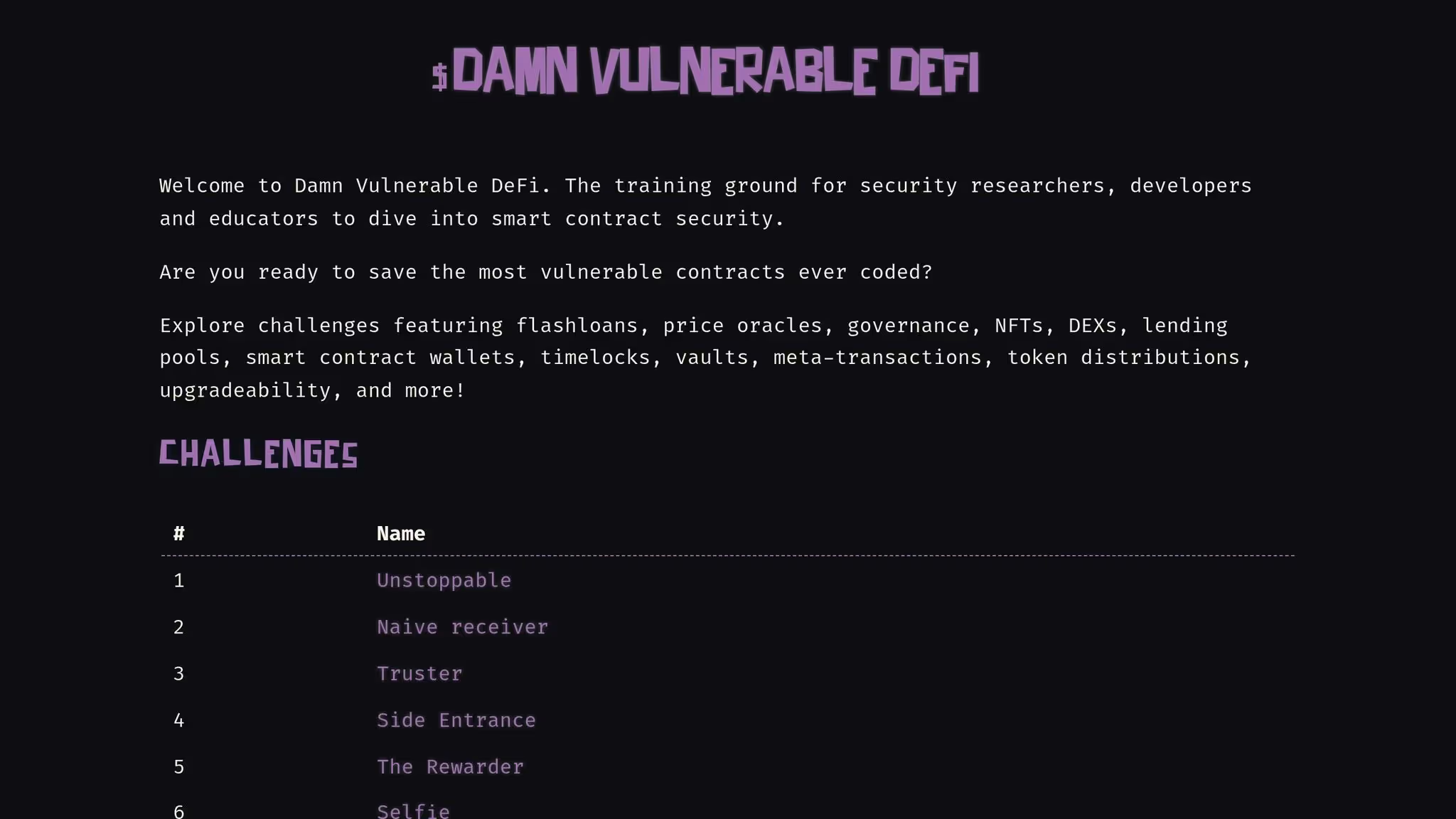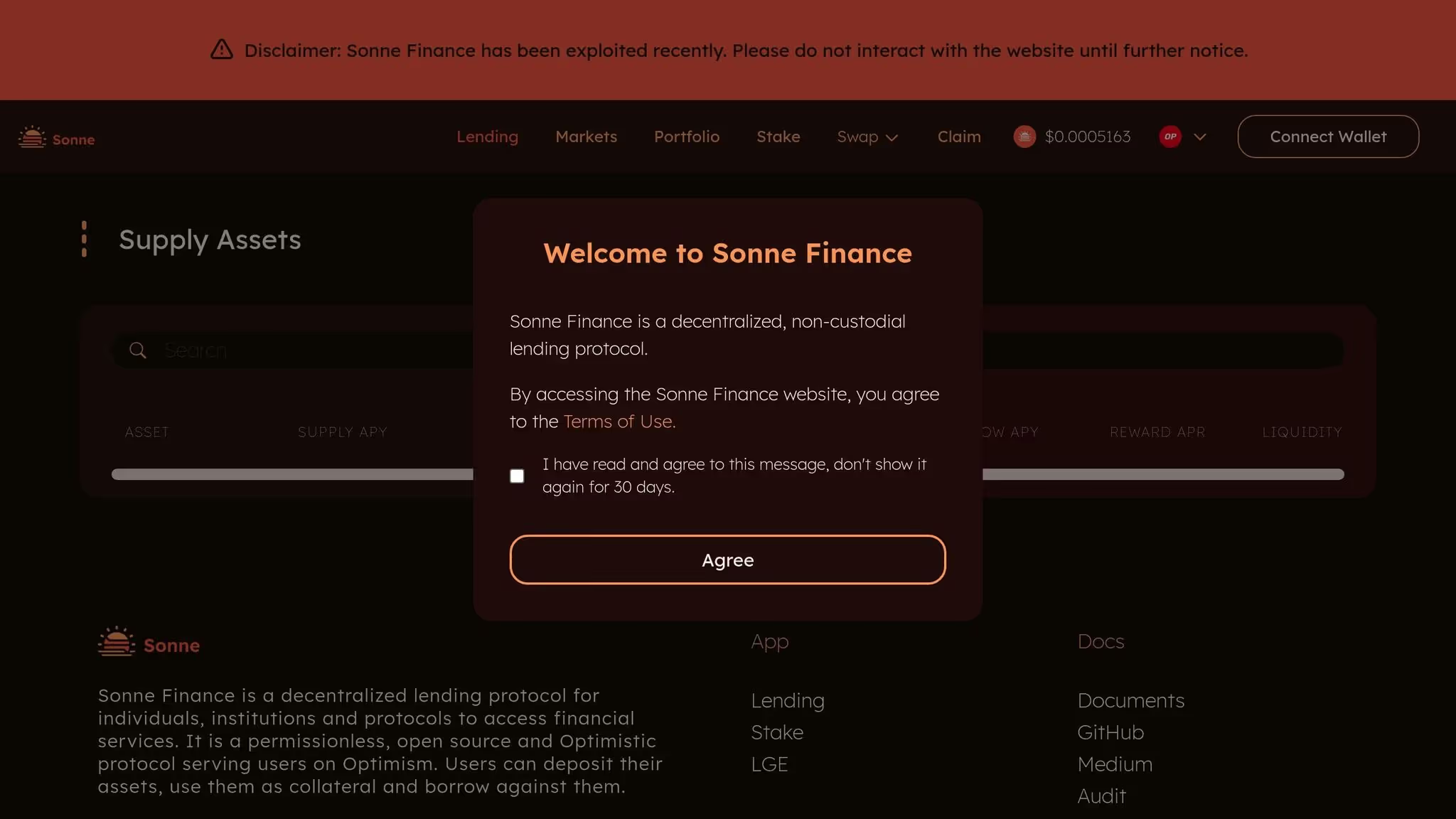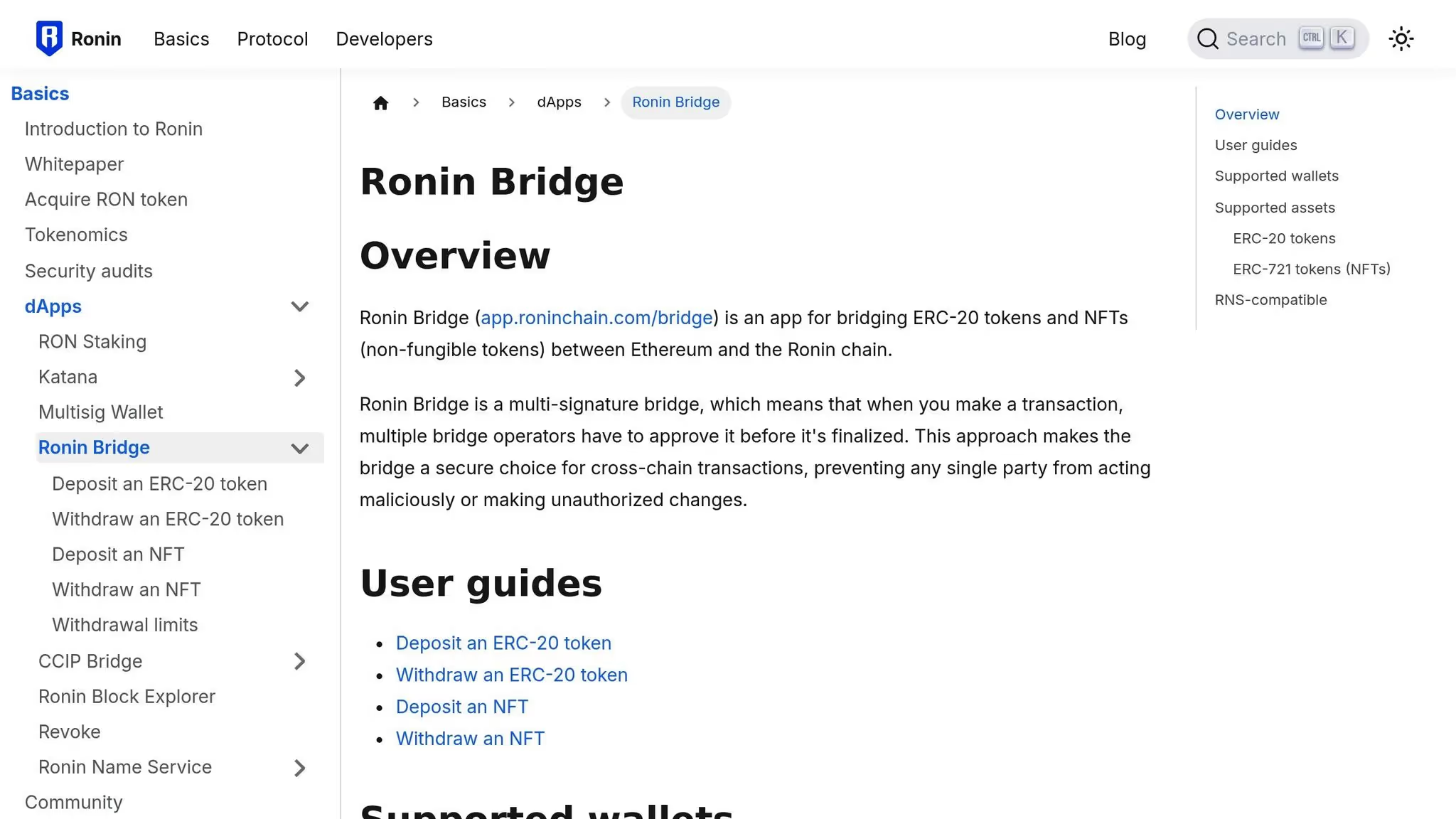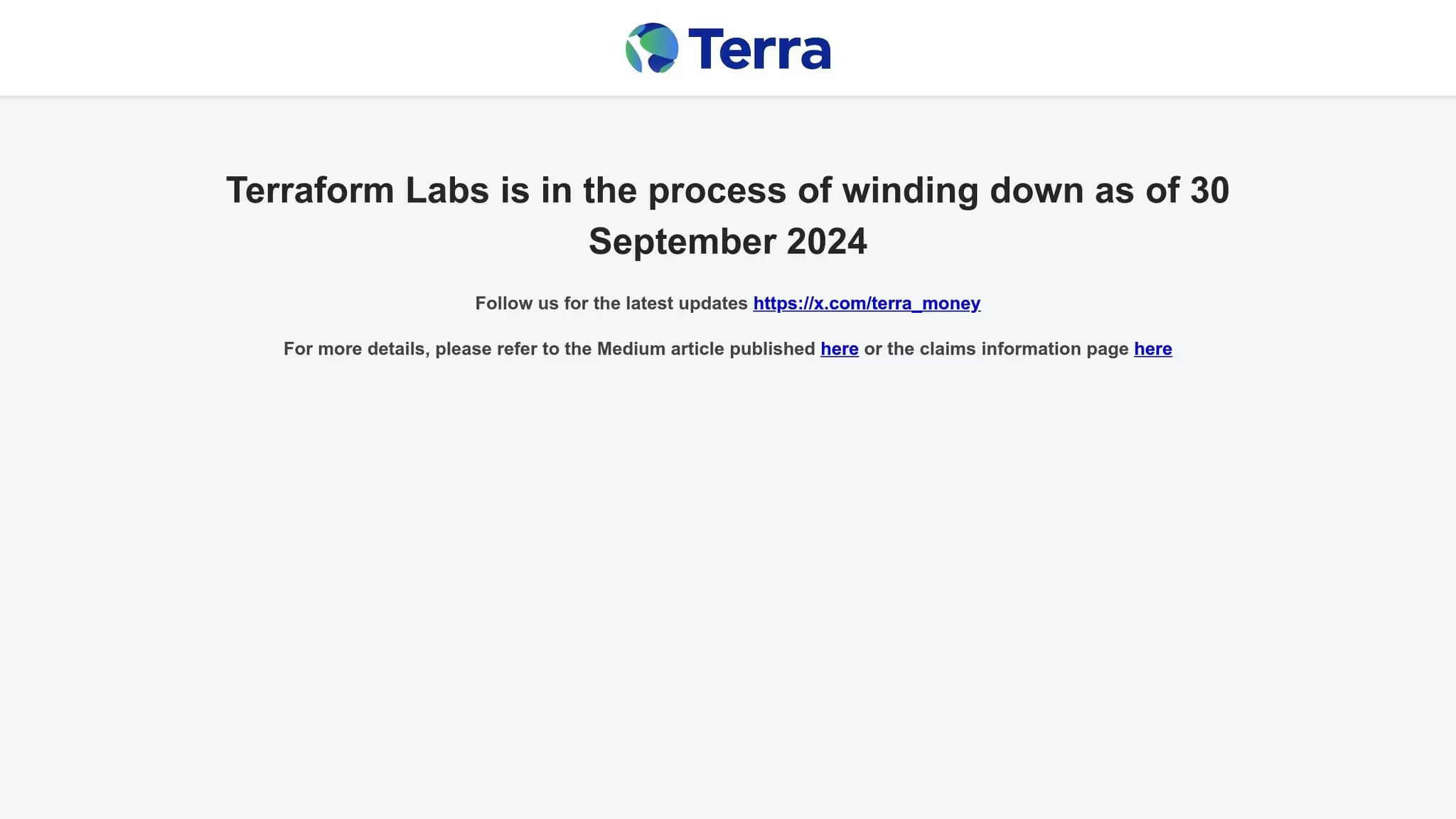Best DeFi Portfolio Tracker for 2024
Discover the best DeFi portfolio tracker for your needs. Compare top tools on chain support, PnL analytics, security, and unique features to manage your assets.

November 23, 2025
Wallet Finder

November 7, 2025

DeFi protocols face significant risks from authorization flaws, which can lead to financial losses, reduced user trust, and increased regulatory scrutiny. These vulnerabilities often arise from weak access controls, poor key management, and governance token centralization. Attackers exploit these flaws using tactics like flash loan attacks, admin key compromises, and governance manipulation. High-profile incidents, such as the Ronin Bridge hack and Terra's stablecoin collapse, highlight the severe consequences of these issues.
Insufficient audits: Many protocols launch without proper security reviews, leaving critical vulnerabilities.
Governance token risks: Centralized voting power can lead to malicious protocol changes.
Flash loan attacks: Exploit system states within a single transaction block.
Admin key compromises: Poor key management opens doors for attackers.

WalletFinder.ai enhances security by monitoring wallet activity across Ethereum, Solana, and Base. Features include:
Take control of DeFi risks. Start your free trial with WalletFinder.ai today.

Understanding the vulnerabilities and techniques used by attackers is essential for protecting DeFi protocols. These risks open the door to potential exploits, jeopardizing both the systems and the trust of their users. Below, we explore some of the most common risk factors in DeFi authorization and the methods attackers use to exploit them. To see how human behavior and online discussions influence market movements, check out How Social Media Sentiment Predicts Crypto Prices for insights into the connection between hype, emotion, and price trends.
One of the most pressing issues is insufficient smart contract auditing. Many DeFi projects rush to launch without conducting thorough security reviews. This haste often leaves critical vulnerabilities undetected. Smart contracts that manage millions - or even billions - of dollars may contain coding errors that allow excessive permissions or fail to implement proper access controls. Such oversights can have devastating consequences.
Another key issue is poor key management, which leaves protocols vulnerable to key compromises. For instance, using single-signature wallets for administrative tasks or storing private keys in insecure locations makes these systems easy targets for attackers. While implementing multi-signature wallets and hardware security modules can reduce these risks, many projects skip these measures during development, exposing themselves to attacks.
Governance token concentration is another significant risk. When a small group of addresses holds the majority of voting power, they can manipulate protocol parameters, execute malicious upgrades, or even drain treasury funds. This kind of centralization undermines the decentralized principles that DeFi is built upon and creates single points of failure.
Inadequate role-based access controls are also a frequent issue. Many protocols grant broad permissions to multiple addresses without carefully defining roles or implementing checks and balances. This lack of structure allows unauthorized users to access critical functions, such as minting tokens, altering interest rates, or pausing operations, increasing the likelihood of misuse.
Lastly, weak oracle dependencies introduce vulnerabilities that attackers can exploit. Protocols relying on a single oracle source or failing to validate data properly are susceptible to price manipulation attacks. Since oracle data often influences key decisions - like liquidation thresholds or collateral requirements - flawed or manipulated data can lead to unauthorized actions.
Attackers exploit these weaknesses through a variety of sophisticated methods, which are detailed below.
Flash loan attacks are a common tactic that targets authorization flaws. In these attacks, an attacker borrows a large amount of cryptocurrency without collateral, manipulates the protocol's state to gain unauthorized access, executes malicious transactions, and repays the loan - all within a single block. This rapid execution leaves little time for detection or intervention.
Admin key compromises directly target the private keys of protocol administrators. Attackers often use phishing, social engineering, or exploit insecure key storage to gain access. Once they have administrative privileges, they can alter smart contract parameters, drain treasury funds, or redirect user assets to their own wallets.
In governance manipulation attacks, attackers exploit voting mechanisms to seize control of a protocol. By acquiring governance tokens - either through market purchases or flash loans - they can propose malicious changes and push them through before the community has a chance to react. Protocols with low voter participation or short voting windows are particularly vulnerable to this type of attack.
Cross-protocol exploitation takes advantage of the interconnected nature of DeFi systems. Attackers identify vulnerabilities in one protocol and use its integration with others to bypass authorization controls. For example, they might manipulate a lending protocol by exploiting its reliance on a compromised price oracle, leading to unauthorized liquidations or other damaging actions.
Time-based attacks exploit delays in authorization mechanisms. While time locks or delayed execution are often implemented to enhance transparency and allow for community oversight, attackers can use these delays to their advantage. By initiating malicious transactions and manipulating protocol states during the waiting period, they can ensure their unauthorized actions succeed.
Finally, reentrancy attacks target the way authorization logic is executed. These attacks involve calling back into a smart contract before a previous function call is completed. By doing so, attackers can bypass authorization checks that assume functions execute in a linear, atomic fashion. This technique allows them to drain funds or gain unauthorized access before the system can complete its checks.
The combination of these risk factors and attack methods creates a challenging environment for DeFi protocols. Addressing these vulnerabilities requires constant vigilance, strong security practices, and a commitment to thorough testing and monitoring.
Examining real-world incidents in DeFi highlights how authorization flaws can lead to devastating financial losses and compromise the integrity of protocols. Each case sheds light on unique vulnerabilities, emphasizing the importance of addressing these issues.

In this case, a weakness in a layer-2 donation mechanism allowed an attacker to manipulate accounting processes. The incident highlights the dangers of incomplete security audits, which can leave protocols exposed to exploitation.

This breach stemmed from poor administrative key management, enabling unauthorized withdrawals through weaknesses in validator controls. The attack revealed that even multi-signature setups are not immune to the risks of centralization when key management is flawed.

Governance missteps and inadequate risk management led to a rapid depeg of Terra's stablecoin, triggering widespread market chaos. The failure of automated stabilization mechanisms in this scenario serves as a stark reminder of the risks tied to poorly managed systems.
These examples make it clear that addressing authorization flaws is not just a technical necessity but a critical step toward ensuring the stability and trustworthiness of DeFi protocols.
Drawing lessons from past incidents, these strategies aim to address and reduce the risks associated with authorization flaws in DeFi systems.
Authorization flaws in DeFi can have far-reaching consequences. They disrupt liquidity, diminish user confidence, and attract increased regulatory scrutiny. When breaches occur, users often withdraw their funds, leading to reduced trading volumes and potentially destabilizing interconnected protocols. Over time, repeated incidents make users more cautious about engaging with DeFi platforms, and this hesitancy can prompt regulators to impose stricter oversight, creating additional challenges for projects in the space.
Addressing authorization flaws requires a layered approach that tackles both technical and operational vulnerabilities. Here are some of the most effective strategies:
Wallet analytics play a crucial role in identifying and addressing potential authorization vulnerabilities, complementing traditional security measures. These tools excel at recognizing patterns that might go unnoticed, tracking fund movements, and issuing timely alerts about suspicious activities. Wallet Finder.ai provides a suite of features that demonstrate how these analytics can mitigate authorization risks in decentralized finance (DeFi) protocols.
Wallet Finder.ai equips users with tools designed to detect and analyze risks tied to authorization flaws. Its real-time monitoring tracks wallet activities across Ethereum, Solana, and Base networks, offering immediate alerts when unusual behaviors arise.
One standout feature is the Telegram alert system, which notifies users of sudden large withdrawals or unusual transaction patterns. These alerts can be customized based on transaction volume, profit changes, or risk levels, enabling users to act swiftly when potential authorization issues are detected.
The platform’s advanced filters allow users to analyze wallets by profit and loss (PnL), win rates, and risk metrics. These insights help pinpoint wallets involved in exploits or exhibiting behavior indicative of authorization bypass attempts. Additionally, cross-chain analytics provide a broader perspective by tracking activities across multiple networks, making it easier to detect coordinated attacks.
Another valuable tool is the token concentration analysis feature, which identifies centralization risks in governance tokens or other protocol-specific assets. By examining token distribution and spotting whale concentrations, users can detect vulnerabilities that might lead to authorization exploits. These features not only enhance risk detection but also support detailed forensic investigations.
When authorization flaws are exploited, Wallet Finder.ai's data export tools become invaluable for forensic analysis. Users can export wallet data in formats like CSV or Excel, enabling a closer examination of transaction patterns before and after suspected incidents.
The wallet overview feature provides a clear view of profit timelines and investment flows. By analyzing historical data, investigators can trace suspicious activities and pinpoint the moments where authorization controls may have been compromised.
Security statistics integration offers another layer of protection by automating contract audits. These audits highlight vulnerabilities such as contract ownership issues, blacklist statuses, or honeypot risks, helping users determine whether wallets are interacting with potentially compromised tokens or protocols.
For a broader perspective, the platform’s X/Twitter sentiment scoring feature measures social sentiment around specific tokens and protocols. Sudden shifts in sentiment can signal growing awareness of authorization flaws or ongoing exploits, offering early warnings for potential threats.
To further enhance monitoring, wallet lists and tracking tools allow users to keep tabs on known bad actors or wallets linked to previous exploits. By maintaining a curated list of suspicious addresses, the community can collectively monitor for new activities that may signal fresh authorization attacks or the reuse of compromised credentials.
Lastly, the trending tokens feature helps identify assets showing unusual activity, which could be tied to authorization exploits. By comparing token performance across chains and analyzing concentration patterns, users can uncover anomalies requiring further investigation.
Authorization flaws pose a serious threat to the stability of DeFi systems. Past incidents highlight how weaknesses like inadequate access controls, insufficient validations, and centralized mechanisms have been exploited, leading to significant vulnerabilities. Whether caused by coding errors or systemic failures, these flaws remain a persistent challenge for DeFi protocols.
Addressing these issues requires a multi-faceted approach. Effective strategies include thorough smart contract audits, decentralized governance models, and continuous monitoring systems. Protocols that adopt a layered defense strategy are better equipped to withstand breaches and mitigate risks.
Adding advanced analytics to this mix further bolsters security efforts. Tools like WalletFinder.ai provide real-time monitoring across Ethereum, Solana, and Base networks, offering insights into fund movements and token concentration. By delivering instant alerts on suspicious activities, such as unusual transaction patterns, these tools help establish a proactive defense framework.
As the DeFi ecosystem evolves, maintaining strong authorization security will remain a critical priority. Through rigorous development practices, advanced monitoring solutions, and an informed community, the path to building secure and resilient decentralized financial systems becomes clearer.
Authorization vulnerabilities in DeFi protocols often reveal themselves through specific warning signs. One common issue lies in flaws within smart contracts, such as weak access controls, which can open the door for unauthorized users to withdraw funds. Other vulnerabilities, like reentrancy attacks or problems with integer overflows and underflows, provide opportunities for hackers to exploit the system.
Another red flag is the absence of thorough smart contract audits. Without detailed reviews, protocols may lack adequate defenses against threats like flash loan attacks or oracle manipulation. These gaps in security can leave the protocol exposed, increasing the risk of authorization breaches.
DeFi enthusiasts can lower their risks tied to governance token concentration by spreading their investments across multiple tokens. By steering clear of heavy reliance on a single token, they can reduce vulnerability to potential manipulation or centralization challenges.
Staying up-to-date with governance proposals and engaging in community votes is another key step. Active participation not only empowers users to shape protocol decisions but also strengthens decentralization, helping to address risks that come with concentrated control.
WalletFinder.ai boosts DeFi security with cutting-edge tools designed for real-time wallet monitoring and performance tracking. By identifying unusual trading behaviors and flagging suspicious activities promptly, it enables users to act quickly to reduce potential risks.
With features like live alerts and in-depth wallet analytics, users can stay ahead of potential threats, manage authorization issues effectively, and strengthen the security of their DeFi interactions.
{"@context":"https://schema.org","@type":"FAQPage","mainEntity":[{"@type":"Question","name":"How can you tell if a DeFi protocol might have authorization vulnerabilities?","acceptedAnswer":{"@type":"Answer","text":"<p>Authorization vulnerabilities in DeFi protocols often reveal themselves through specific warning signs. One common issue lies in <strong>flaws within smart contracts</strong>, such as weak access controls, which can open the door for unauthorized users to withdraw funds. Other vulnerabilities, like reentrancy attacks or problems with integer overflows and underflows, provide opportunities for hackers to exploit the system.</p> <p>Another red flag is the absence of thorough <strong>smart contract audits</strong>. Without detailed reviews, protocols may lack adequate defenses against threats like flash loan attacks or oracle manipulation. These gaps in security can leave the protocol exposed, increasing the risk of authorization breaches.</p>"}},{"@type":"Question","name":"What steps can DeFi users take to minimize risks from governance token concentration?","acceptedAnswer":{"@type":"Answer","text":"<p>DeFi enthusiasts can lower their risks tied to governance token concentration by spreading their investments across multiple tokens. By steering clear of heavy reliance on a single token, they can reduce vulnerability to potential manipulation or centralization challenges.</p> <p>Staying up-to-date with governance proposals and engaging in community votes is another key step. Active participation not only empowers users to shape protocol decisions but also strengthens decentralization, helping to address risks that come with concentrated control.</p>"}},{"@type":"Question","name":"How does WalletFinder.ai help improve DeFi security against authorization vulnerabilities?","acceptedAnswer":{"@type":"Answer","text":"<p>WalletFinder.ai boosts DeFi security with cutting-edge tools designed for real-time wallet monitoring and performance tracking. By identifying unusual trading behaviors and flagging suspicious activities promptly, it enables users to act quickly to reduce potential risks.</p> <p>With features like live alerts and in-depth wallet analytics, users can stay ahead of potential threats, manage authorization issues effectively, and strengthen the security of their DeFi interactions.</p>"}}]}
"I've tried the beta version of Walletfinder.ai extensively and I was blown away by how you can filter through the data, and the massive profitable wallets available in the filter presets, unbelievably valuable for any trader or copy trader. This is unfair advantage."
.avif)
Pablo Massa
Experienced DeFi Trader